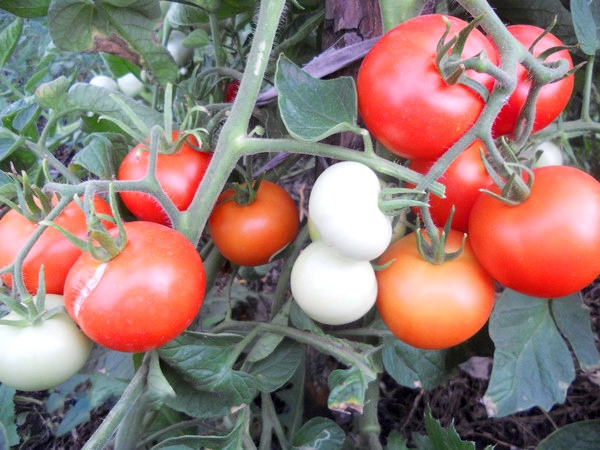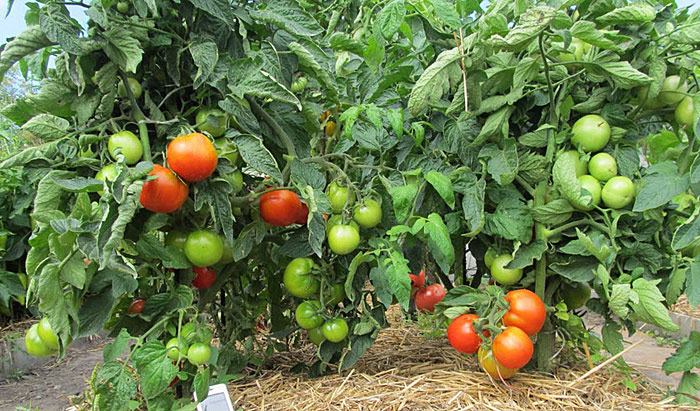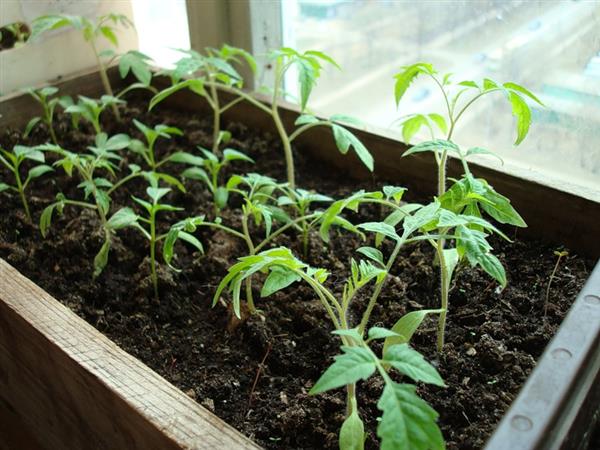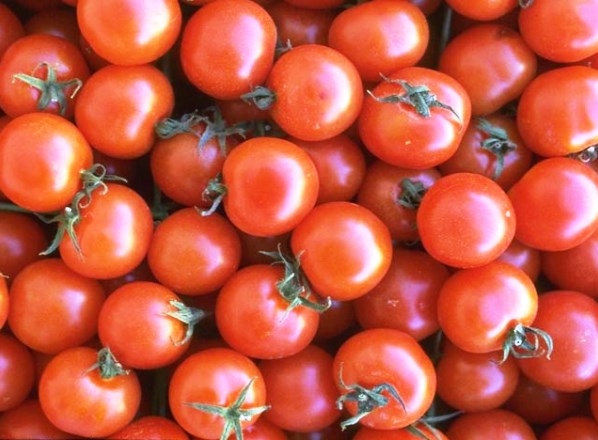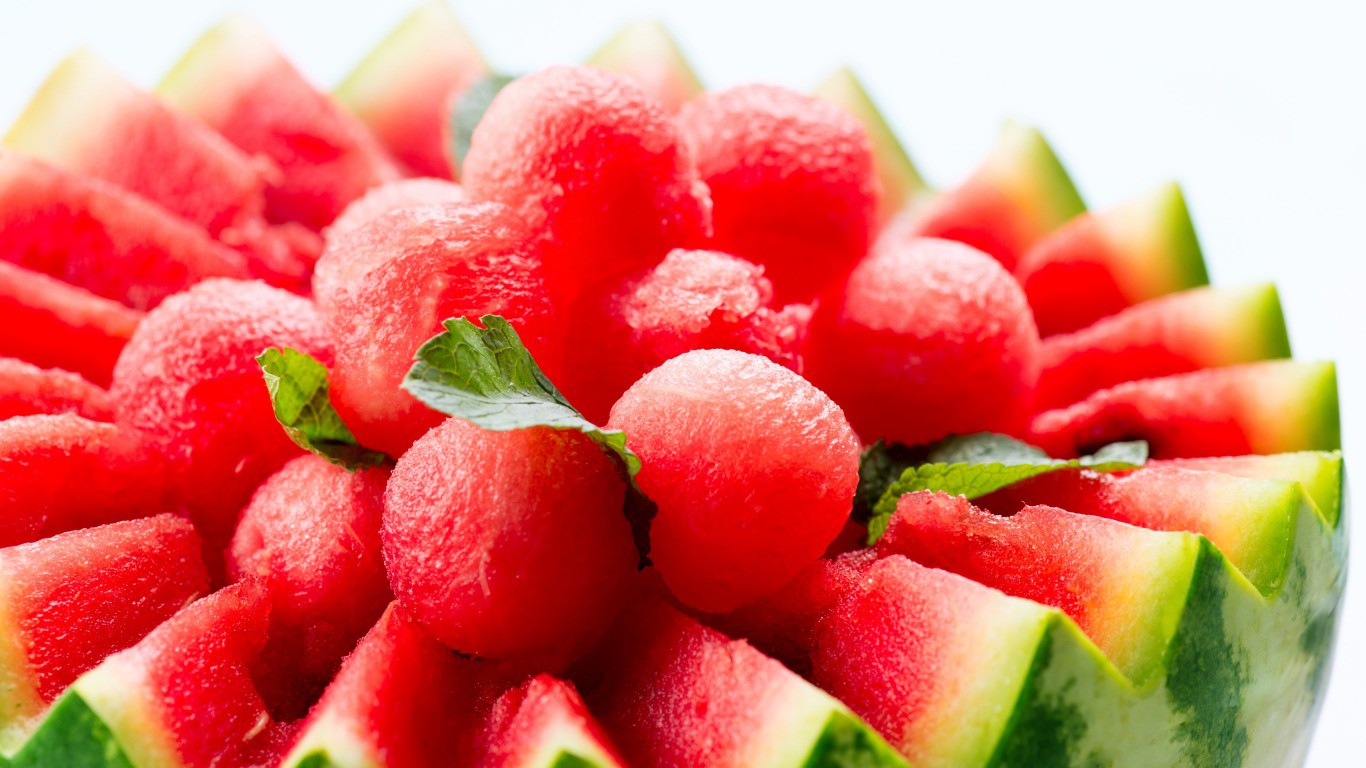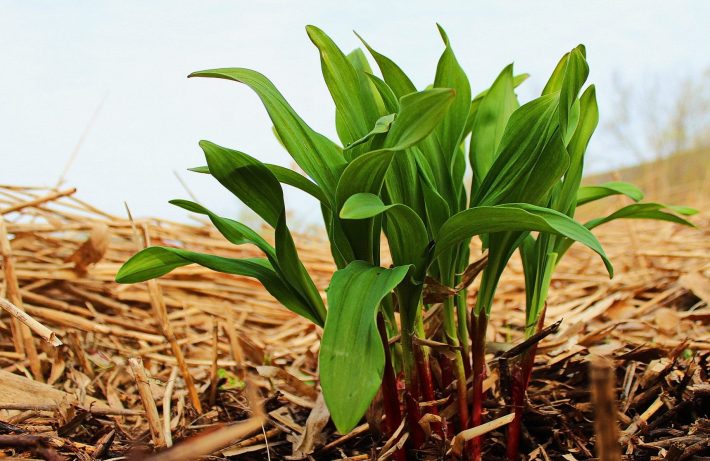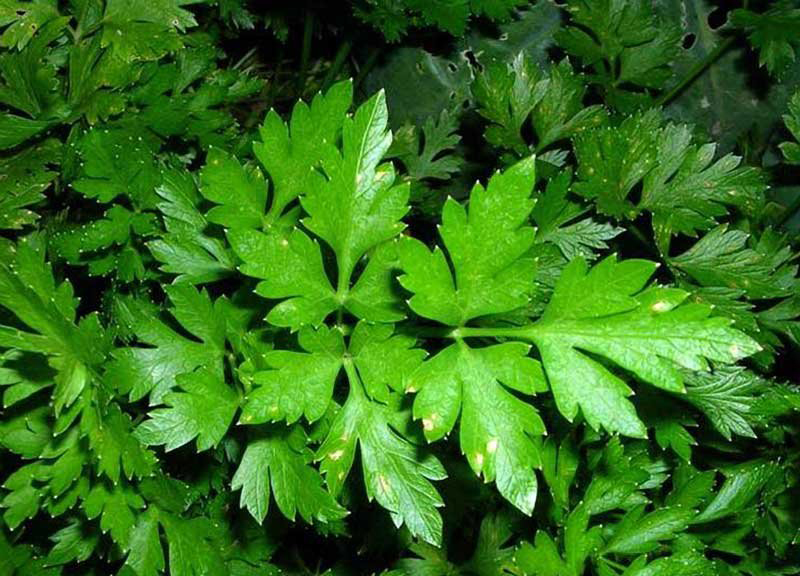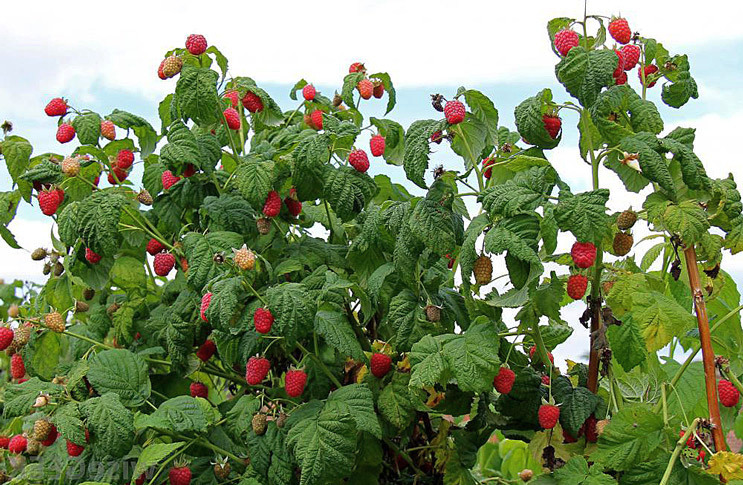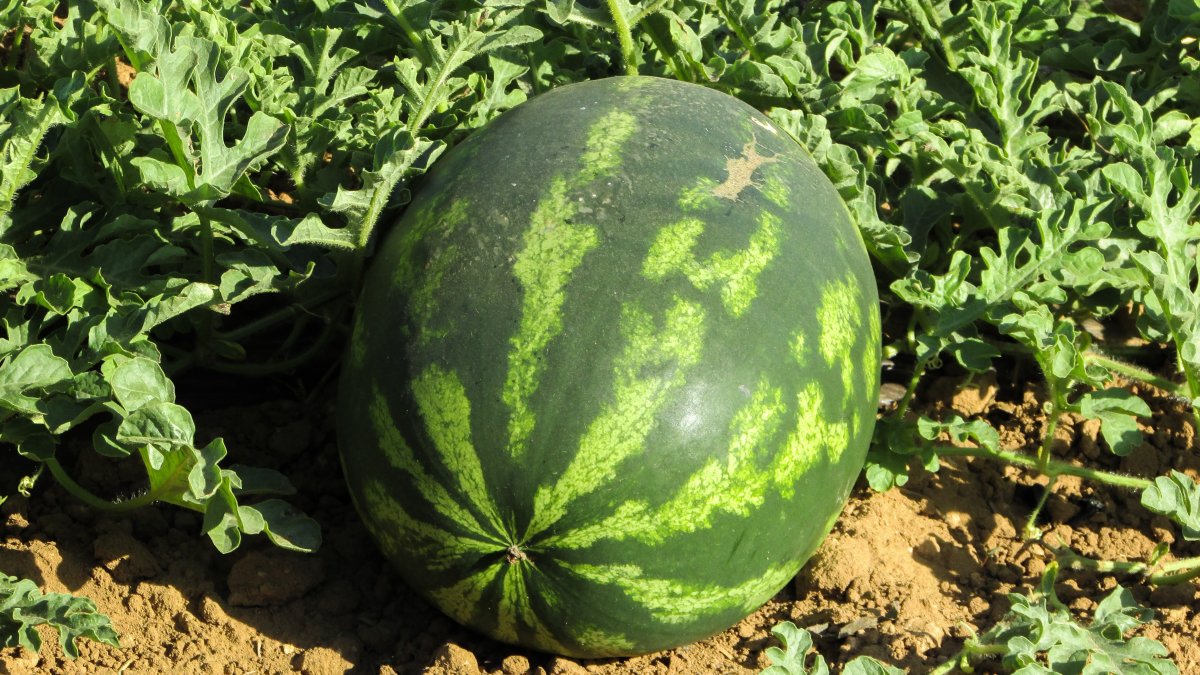Content:
Tomatoes are one of the most popular garden crops. Their fruits are universal both for consumption in raw form and in the form of whole-fruit preserves, tomato juice and twists. However, beginners are discouraged by the difficulty of leaving. One of the easily cultivated varieties is the tomato known as Yablonka Rossii. The variety is unpretentious, tolerates temperature changes and changes in rainy periods with dry ones. It is suitable for gardeners who combine everyday work with gardening activities. Having the opportunity to visit the plantings only on weekends, but, at the same time, wanting to get a good harvest, you should pay attention to the described variety.
The history of the creation of the variety
The specialists of the Sady Rossii company were engaged in the development of the Yablonka of Russia tomato variety back in the early 80s. The variety was originally known as Tamina tomato. However, after testing for 3 seasons, it was registered in 2000 in the State Register as a tomato Yablonka of Russia and is recommended for growing in all regions of the country, except for the regions of the Far North. The new variety has become widespread, thanks to its undeniable advantages and lack of disadvantages.
Tomato Yablonka of Russia: characteristics and description of the variety
The Apple-tree tomatoes of Russia belong to the early-maturing varieties. From the moment of planting the seeds to the fruiting period, on average, 95-110 days pass. The plant is well suited for growing both in greenhouses and greenhouses, and in the open field. Tomatoes are not very susceptible to adverse conditions, including dry periods.
Determinate standard bushes, 80-100 cm, medium branched, medium leafy. A characteristic feature of the variety is the shape of the leaves, which served as the source of the variety's name. This is especially noticeable on young seedlings, the leaves of which outwardly resemble those of apple. As they grow, they change, taking the form of potato leaves. A medium-sized leaf blade, rich green, with a wavy edge.
Inflorescences, as a rule, are simple, although there are also intermediate types. The first inflorescences are formed above 5-9 leaves. Subsequent - are laid with an interval of 2 sheets. Yablonka belongs to self-pollinated varieties, characterized by good tying and extended fruiting. Fruits begin to ripen in August and continue until the end of September. On the brush, there are on average 5-8 tomatoes, up to 100 pieces can be removed from the bush. From a square meter of a bed, you can get up to 5.6 kg of tomatoes.
Fruits are round, smooth, with uniform dense pulp. Unripe tomatoes are light green in color, ripe ones are orange-red. The tomatoes are juicy, with a characteristic taste, with a slight sourness present. The average weight ranges from 80-100 g. The tomato consists of two chambers and has a lot of seeds. By husking the seeds from a ripe tomato, you can provide seed for the next season. The fruit does not crack, although the skin is not tough. Thus, they tolerate transportation and long-term storage in a cool room well.
Growing features
The apple tree of Russia tomato is a thermophilic variety, grown in seedlings. Seeds should be sown 45-60 days before transplanting into open ground. The soil taken for seedlings directly from the garden must be decontaminated.It can be baked in the oven at 200 ℃ for 10-15 minutes or in the microwave for 1-2 minutes at 850 W. You can also spill boiling water or a strong solution of potassium permanganate in containers with drainage holes. To improve air access to the roots of seedlings, you can add up to 20% of the total volume of baking powder in the form of coconut shavings, vermiculite or small sawdust to the soil mixture.
You can also prepare the soil mixture yourself. For this, compost, humus and soil are mixed in a 1: 1: 1 ratio, a couple of glasses of wood ash, 3 tablespoons of superphosphate are introduced. The resulting mixture should be slightly acidic or neutral.
The seeds are immersed in the soil to a depth of 1 cm, the soil is moistened and covered with a film. The optimum temperature for seed germination is 25-28 ℃. With the appearance of the first sprouts, the containers with seeds should be placed in a sunny place. Daylight hours should be at least 10 hours. In the absence of the spring sun or in conditions of darkening, it is necessary to supplement the lighting with phyto, - or fluorescent lamps. Seedlings should be watered as needed. It is advisable to add a spoonful of ash to an additional 1.5 liters of water, which will prevent the development of a destructive disease - "black leg".
A pick must be made with the appearance of 1-2 true sheets. For this, a separate small pot is allocated for each sprout. Tomatoes must be dived to stimulate the growth of the root system, not only in length, but also in width. This significantly increases the chances of tomatoes quickly and painlessly adapting to a new place. To get strong bushes, hardening is required: the plants are taken out for some time to fresh air. The time of the procedures is gradually increased, eventually leaving you to spend the night outside, if the air temperature does not drop below + 5 ℃. When the seedlings reach the age of 60 days, they can be planted in a permanent place of growth.
Yablonka prefers places protected from strong winds and drafts with sufficient lighting. The soil should be loamy with plenty of organic fertilizers. Up to 4 plants should be placed per square meter. For planting, holes are formed at a distance of 50-60 cm, into which the manure of any farm animals and birds or settled humus is laid. If planting is more frequent, then the growth of tomatoes will be reduced, which will significantly reduce the yield.
Next, you should water abundantly and cover the fertilizer with a layer of earth, only then plant the plant and water abundantly again. For early adaptation to new conditions, it is necessary to cover the seedlings with foil or agrofibre for several days.
The first top dressing should be carried out no earlier than 2 weeks after planting, after the roots have adapted to the new soil. Herbal infusions such as mint, valerian, dandelion and nettle are well suited for this. Herbs are brewed in water in a 2: 1 ratio until a characteristic unpleasant odor appears. Introduce the infusion under the roots of plants, avoiding contact with the leaves, diluting 1 liter of infusion for 10 liters of water. This treatment helps to strengthen the bushes and prevents the appearance of garden pests. Wood ash stimulates the development of seedlings well; it should be applied at the root 1-2 times a month.
As for other crops, mulching with organic matter favorably affects Yablonka tomatoes, i.e. covering the soil around the plant with humus, sawdust, straw, or grass cuttings.Such a technique will protect against the growth of weeds and preserve the natural microclimate of the root system, preventing drying out and winding of the soil. By spreading a mixture of manure and straw between the beds with a thick layer, you can achieve an additional increase in ovaries. Having a high yield with active growth, in order to avoid breaking the stem, the bushes must be tied up, for this it is worth using strips of soft tissues or hemp rope.
Advantages and disadvantages of the variety
A characteristic feature of the variety is the absence of the need for pinching and forming a bush, which makes the tomato attractive for vegetable growers who do not have the opportunity to frequently care for the garden. You can shoot tomatoes both ripe and green. Removing some of the fruits stimulates the formation of new ovaries. Green fruits ripen well in a dark place.
Yablonka tomatoes are resistant to the main diseases of tomatoes: Alternaria, Fusarium and Verticellosis. However, the main problem is the attack of pests in the form of the Colorado potato beetle, aphids and spider mites. Therefore, it is necessary to carry out treatment with insecticides or folk remedies in a timely manner.
Summarizing the above, we can conclude that the Yablonka tomato of Russia, due to its high yield, unpretentious care and resistance to diseases, is an attractive variety for summer residents, especially for beginners. High palatability allows extensive use of fruits in cooking, and the small size of tomatoes, uniformity and harmonious ripening of the crop makes the variety ideal for preparing canned preparations.
